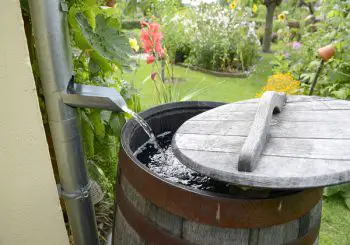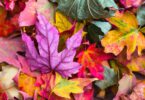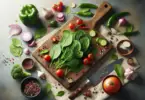Contributing writer for Wake Up World
In recent weeks, I’ve dedicated several articles to prepping for food inflation and shortages of both food and energy. But perhaps even more important than stocking up on nonperishable foods is to make sure you have a supply of potable water. Many are so used to having running tap water on demand, they forget that source can vanish overnight.
[pro_ad_display_adzone id=”110028″]
City water is typically pumped into a tall water tower. It’s then distributed from the tower into your house by gravity. However, during a power outage, no new water can be pumped into the tower if the municipality runs out of fuel to run its backup generators.
That means the only water available for the area is what’s in the tower. If the power failure continues for an extended period of time, the tank will be emptied and taps will run dry.
Apartment dwellers are even more vulnerable to power outages, as the water may be shut off immediately upon a power outage. This is because the water is pumped up into the apartments from the basement, and without electricity, that pump won’t work unless there’s a backup generator.
Even then, the water will only flow for as long as the generator has fuel. People with well water are in the same situation. Most well pumps are powered by electricity, and when there’s a power outage, you’ll need a generator. If you have a well it is imperative you not only have a backup generator but a secondary pump or even two in case your primary pump fails.
If you live in a hurricane prone area, you’re probably used to the annual ritual of stocking up on bottled water. However, you can only store so many bottles, and if deliveries to your local grocery store are interrupted for a period of time — which at this point is a very real possibility — you’ll eventually run out.
So, with all those limitations, and the prospects of rising energy costs, rolling blackouts or perhaps even longer term power outages, how can you make sure you’ll have enough water to drink, cook, maintain hygiene and water your garden with?
Rain Barrel Solution for Homes
The solution I’ll focus on in this article involves installing one or more rain barrels. This won’t work if you live in an apartment, but if you have a home, it’s an excellent long-term solution. In the video above, BlueBarrel founder Jesse Savou explains how to set up a gravity-fed drip irrigation system for your garden using several rain barrels.
The BlueBarrel rainwater catchment system includes a series of rain barrels set on top of a couple of cinder blocks to achieve a 3-foot elevation. The barrels are connected with PVC pipe, and the barrel on one end is connected to a drip irrigation hose with a timer. The pipe is equipped with a fine-mesh filter to prevent debris from clogging the emitters.
The timer Savou uses is solar operated, so no electricity is required. It will also work with AA batteries if you don’t have a lot of sun. The two types of driplines they sell with their kits are both nonpressurized and work by gravity alone. “You don’t want to use regular drip equipment or compensator lines,” Savou warns, “because you won’t get good output.”
If you don’t have a garden, and despite looming food shortages don’t want to start one, this water can save you in the case you lose your tap water as well. A system like this can provide a lot of peace of mind, as the water will be replenished indefinitely without you having to do any work.
The only thing that will threaten you water supply is a persistent drought. That said, you do have to take precautions to keep the water in your barrels clean, which I’ll review in a later section.
This is not the system I use. Since I have a full acre of land to grow food on I need loads more water, so I have a 5,000-gallon cistern that collects rainwater from the gutters on my roof. This serves to augment my irrigation system but is also a large emergency source of water.
Why Irrigate With Rain Water?
“You could deliver 14 inches of water … through sprinklers or hoses or drip emitters and your plants would not look as good or be as healthy as when the same amount of water, in the form of rain, is heaven-sent …
There are several reasons rainwater is more suitable for plants than tap water, but the most important is chemistry. In tap water, chlorine is a necessary disinfectant and fluoride is added … Nearly all plants, however, are susceptible to chlorine toxicity, usually expressed in burnt leaf margins …
[P]ines, yuccas, and fruit trees, in particular, are subject to fluoride toxicity as well, with symptoms ranging from burnt, discolored, or spotted leaves to stressed fruit that may become diseased.”
Rain water also has the following benefits over tap water:
- It contains far lower concentrations of minerals such as calcium, magnesium and sodium. Calcium and magnesium can leave white sediment deposits on plants, and sodium (used in water softeners) is toxic to plant tissue. Sodium also damages soil structure by dispersing beneficial aggregates, thereby causing the soil surface to crack.
- Rainwater pulls down elements of nitrogen (nitrate and ammonium) from the air, which are taken up by plants’ roots and leaves. Air is 78% nitrogen, and nitrogen makes the plants greener. This is why a good rain makes greenery pop with fresh color.
- Rainwater also contains higher concentrations of oxygen than tap water, which prevents root rot.
- It also brings down carbon dioxide, which is beneficial for plants. Carbon dioxide is what gives rainwater an acidic pH. In the soil, this acidic water releases important plant nutrients such as zinc, manganese, copper and iron, making it more available to your plants.
- Rainwater is distributed uniformly across the garden, so the entire root zone is watered. Rain also helps flush salts that have been deposited by tap water away from the roots. These salts impede plant growth, and once flushed further down below the root system will result in pronounced growth.
How to Keep the Water Clean
- Keeping trees away from the roof to prevent leaves and debris from collecting in your gutters. A leaf guard on your gutters will be helpful
- A metal roof is preferable if you have the option; shingles will require better filtering as they can add petrochemicals from the roofing material into the water
- Always install a preliminary filter like a leaf diverter, plus a screen on the inlet going into the barrel
- Treat the water with bleach once a month. This will help prevent algae growth. All you need is 1/4 teaspoon per gallon of water, or 2 to 4 tablespoons for a 55-gallon barrel. Beneficial microbes can also be used in lieu of bleach. One such product is Nutri-Life BAM3
- Test the pH of your water once a month using a standard pH test strip. If the water is neutral or alkaline (aka “hard” water), add baking soda to bring back its acidity. For a 55-gallon barrel, you typically only need a couple of tablespoons to correct the pH balance. Vinegar is another option for lowering the pH
If the inside of the barrel gets slimy or visible algae is growing in it, if you notice waterborne insects such as mosquitoes breeding in it, or if the water smells bad, you’ll need to flush and scrub the barrel.
Ideally, empty and scrub each barrel once a year before the heaviest rain season. Under ideal conditions, you may only need to scrub them every other year. For detailed instructions on how to clean the barrel, see Homestead in Hawaii’s essential guide on keeping your rain barrels clean.4
Are You Using a Toxic Hose?
Lead, bromine, antimony, phthalates, BPA and flame retardant chemicals were all common culprits found in garden hoses during a 2016 test,5 and many of those chemicals were found in unsafe amounts in the water run through the hose.
As just one example, the U.S. Environmental Protection Agency’s action level for lead in drinking water is 15 parts per billion (ppb), and lead-containing hoses resulted in the water having lead levels between 13 and 20 ppb. As noted by Gillian Miller, Ph.D., a staff scientist at the Ecology Center:6
“Even if you actively avoid putting harmful chemicals into your yard or garden in the form of pesticides, you could still be adding hazardous chemicals into your soil by watering with one of these hoses. The good news is that none of these chemicals are necessary in garden hoses, and a number of safe hoses are available.”
The safest hoses out of the ones tested were Big Boss AquaStream Ultra Light, Pocket Hose Dura-Rib II, Room Essentials Coil Hose with Multi Pattern Nozzle, and Water Right Professional Coil Garden Hose. For general guidance, read the label and look for a hose labeled “Drinking Water Safe” and “Lead-Free.” Avoid hoses that have a California Prop. 65 warning, as that means they likely contain cancer-causing chemicals.
Other ways to minimize chemical exposures include not letting the hose bake in the sun, and letting the water run for at least five seconds or longer for long hoses, before watering your plants, to flush out chemicals that may have leached into the stagnant water. I recommend not drinking out of your garden hose, but if you’re setting up a water collection system for drinking that requires the use of a hose, make sure it’s nontoxic.
Water Purification Strategies
Filtration systems such as the Berkey system that can filter out pathogens would be ideal. Also, be sure to stock up on extra filters. These kinds of filtration systems can also be used to filter other, far more questionable water sources, such as water collected from a lake or stream.
- Boiling — It won’t remove debris, chemical contaminants or other impurities, but it will kill bacteria, viruses and protozoa that could make you acutely sick.To disinfect by boiling, start with water that has been run through some kind of filter. In a pinch, you could run cloudy water through a clean cloth or coffee filter. Bring the water to a rolling boil for at least 60 seconds. At altitudes above 5,000 feet (1,000 meters) water boils at a lower temperature so you need to boil it for 3 minutes. A solar kettle9 can be a valuable backup system that will allow you to boil water during a power outage.Let the water cool and store in a clean, closed container. To improve the taste, you can add a small pinch of salt per quart or liter of water. Other strategies that can help improve the taste of boiled water are to pour the water back and forth several times between two clean containers, or stir it vigorously with a large spoon.
- Liquid bleach — After filtration, add eight drops of 6% bleach per gallon of water, or six drops of 8.25% bleach per gallon. If the water is cloudy or miscolored, use double the amount.Stir and let stand for 30 minutes before using. The water SHOULD have a very mild bleach odor. If it doesn’t, repeat using the same dosage and let stand for 15 minutes. If the chlorine taste is too strong, pour the water between two clean pitchers several times and/or let it stand for a few hours before using.Only use regular, unscented chlorine bleach that’s been stored at room temperature for less than one year. You’ll need a medicine dropper to measure out the drops. Do not use bleach products that are scented, “color safe” or have added cleaners.
- Iodine — First aid iodine solution is another option if you cannot boil the water and don’t have bleach. Add five drops of 2% iodine tincture to each quart or liter of water. If the water is cloudy, add 10 drops. Stir and let stand for 30 minutes or more before using.
- Water disinfection tablets — You can also purchase ready-made water disinfection tablets. For those, follow the instructions on the product label.
Hopefully, reality is starting to set in and you’ve already begun considering your options. How are you going to provide safe drinking water for yourself and your family if the worst-case scenario becomes reality and there’s no tap water and no bottled water being delivered to the store?
If you’re not collecting rainwater and have no freshwater source on your property, be it a well, lake or stream, you’d be wise to plot out where your nearest water source is.
If you live in the U.S., findaspring.com can help you locate freshwater springs, most of which are relatively pristine, that allow you to collect water free of charge or for a small fee. As long as you have water purification and disinfection supplies on hand, you’ll be able to treat whatever water you’re able to get your hands on.
References:
1. Mercury News February 13, 2017
2. Homesteadinhawaii.com Keeping Water Clean in a Rain Barrel
4. Homesteadinhawaii.com Keeping Water Clean in a Rain Barrel
5. Safer Chemicals June 20, 2016
6. Safer Chemicals June 20, 2016
About the author:
Born and raised in the inner city of Chicago, IL, Dr. Joseph Mercola is an osteopathic physician trained in both traditional and natural medicine. Board-certified in family medicine, Dr. Mercola served as the chairman of the family medicine department at St. Alexius Medical Center for five years, and in 2012 was granted fellowship status by the American College of Nutrition (ACN).
While in practice in the late 80s, Dr. Mercola realized the drugs he was prescribing to chronically ill patients were not working. By the early 90s, he began exploring the world of natural medicine, and soon changed the way he practiced medicine.
In 1997 Dr. Mercola founded Mercola.com, which is now routinely among the top 10 health sites on the internet. His passion is to transform the traditional medical paradigm in the United States. “The existing medical establishment is responsible for killing and permanently injuring millions of Americans… You want practical health solutions without the hype, and that’s what I offer.”
Visit Mercola.com for more information, or read Dr. Mercola’s full bio and resumé here.
[pro_ad_display_adzone id=”110027″]








